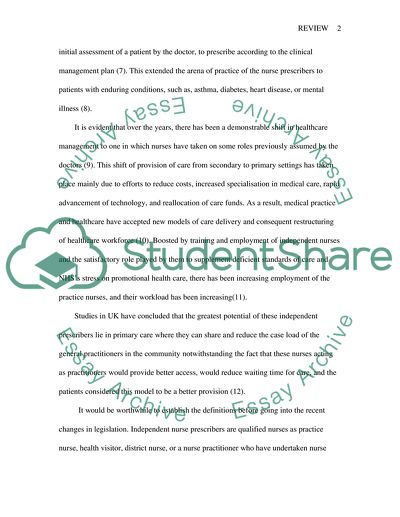Cite this document
(Independent Nurse Prescribing Case Study Example | Topics and Well Written Essays - 2500 words, n.d.)
Independent Nurse Prescribing Case Study Example | Topics and Well Written Essays - 2500 words. Retrieved from https://studentshare.org/nursing/1541482-review-the-recent-legislative-changes-in-relation-to-independant-nurse-prescribinggive-an-account-of-the-impact-of-these-changes-on-your-practice-with-a-particular-focus-on-accountabiltiy-and-responsibiltiy
Independent Nurse Prescribing Case Study Example | Topics and Well Written Essays - 2500 words. Retrieved from https://studentshare.org/nursing/1541482-review-the-recent-legislative-changes-in-relation-to-independant-nurse-prescribinggive-an-account-of-the-impact-of-these-changes-on-your-practice-with-a-particular-focus-on-accountabiltiy-and-responsibiltiy
(Independent Nurse Prescribing Case Study Example | Topics and Well Written Essays - 2500 Words)
Independent Nurse Prescribing Case Study Example | Topics and Well Written Essays - 2500 Words. https://studentshare.org/nursing/1541482-review-the-recent-legislative-changes-in-relation-to-independant-nurse-prescribinggive-an-account-of-the-impact-of-these-changes-on-your-practice-with-a-particular-focus-on-accountabiltiy-and-responsibiltiy.
Independent Nurse Prescribing Case Study Example | Topics and Well Written Essays - 2500 Words. https://studentshare.org/nursing/1541482-review-the-recent-legislative-changes-in-relation-to-independant-nurse-prescribinggive-an-account-of-the-impact-of-these-changes-on-your-practice-with-a-particular-focus-on-accountabiltiy-and-responsibiltiy.
“Independent Nurse Prescribing Case Study Example | Topics and Well Written Essays - 2500 Words”. https://studentshare.org/nursing/1541482-review-the-recent-legislative-changes-in-relation-to-independant-nurse-prescribinggive-an-account-of-the-impact-of-these-changes-on-your-practice-with-a-particular-focus-on-accountabiltiy-and-responsibiltiy.


